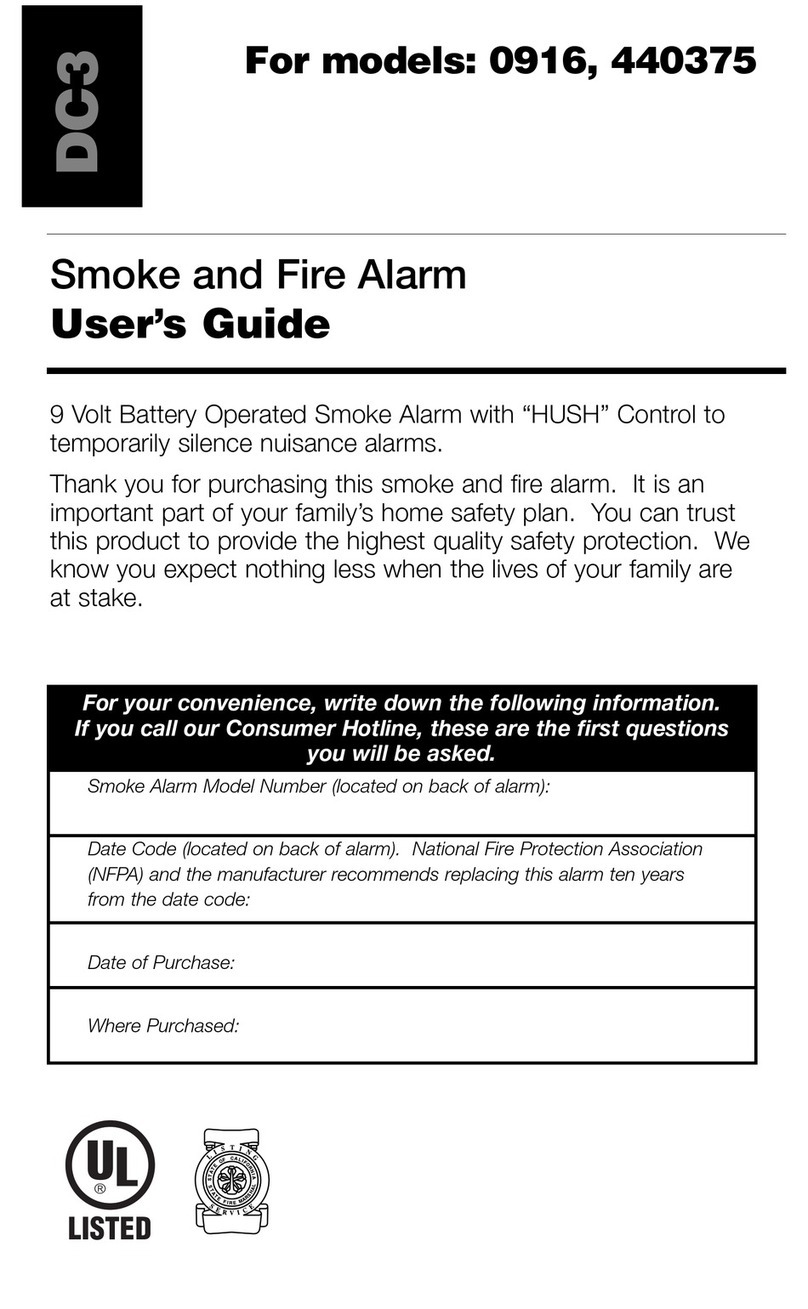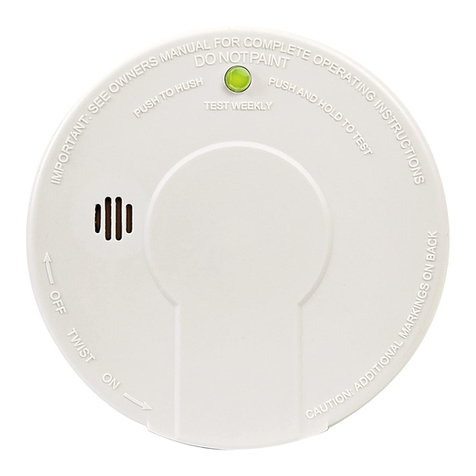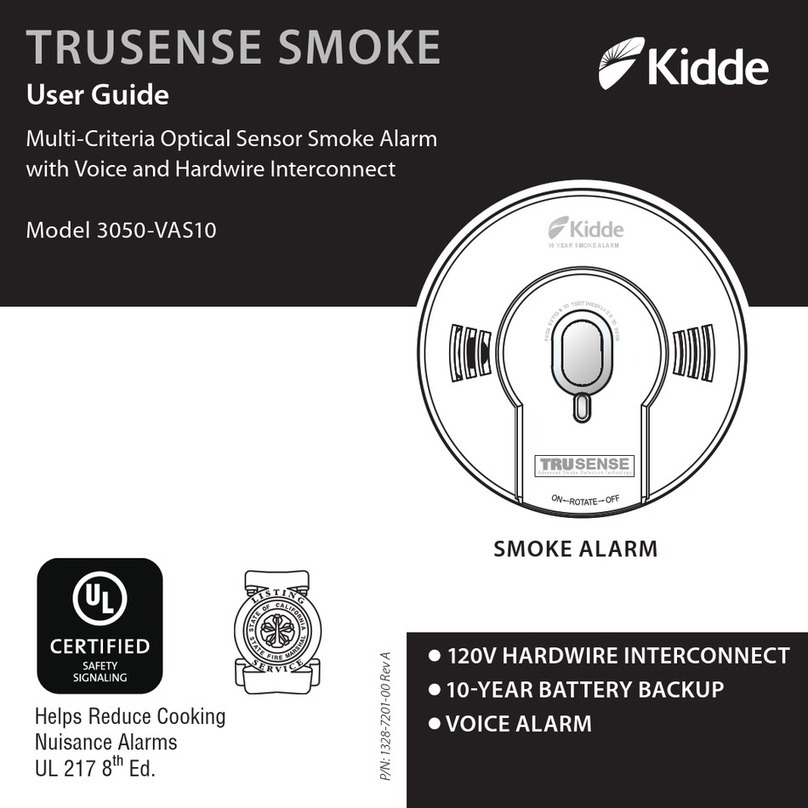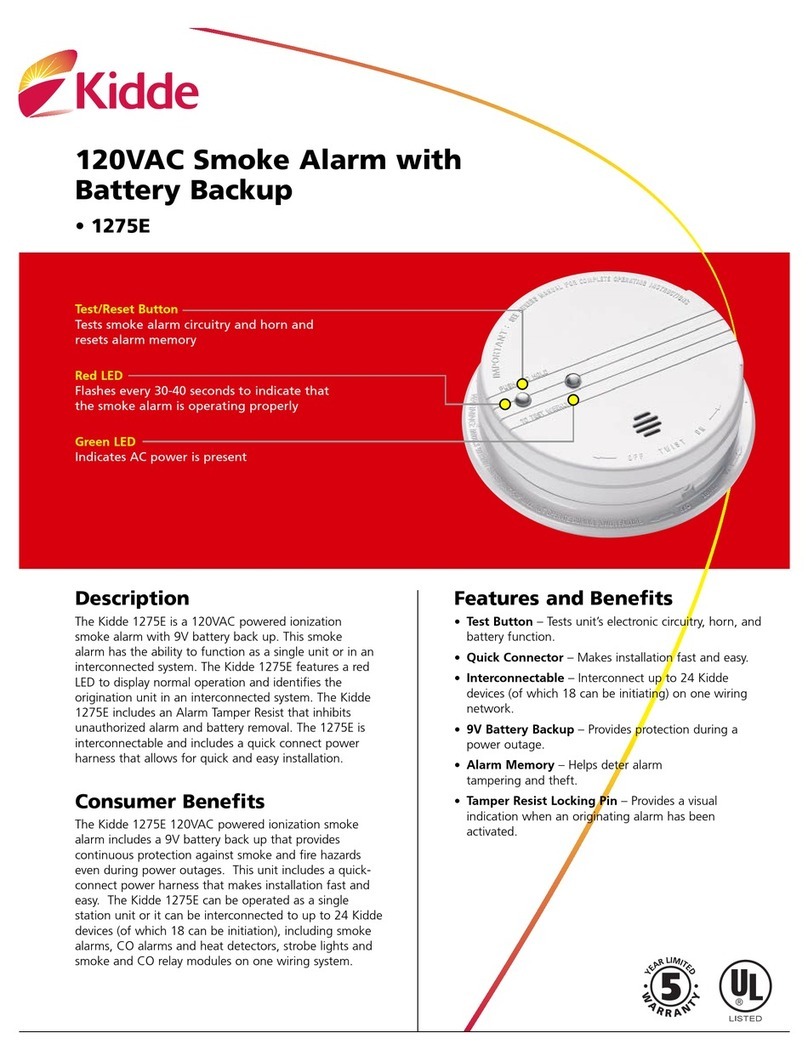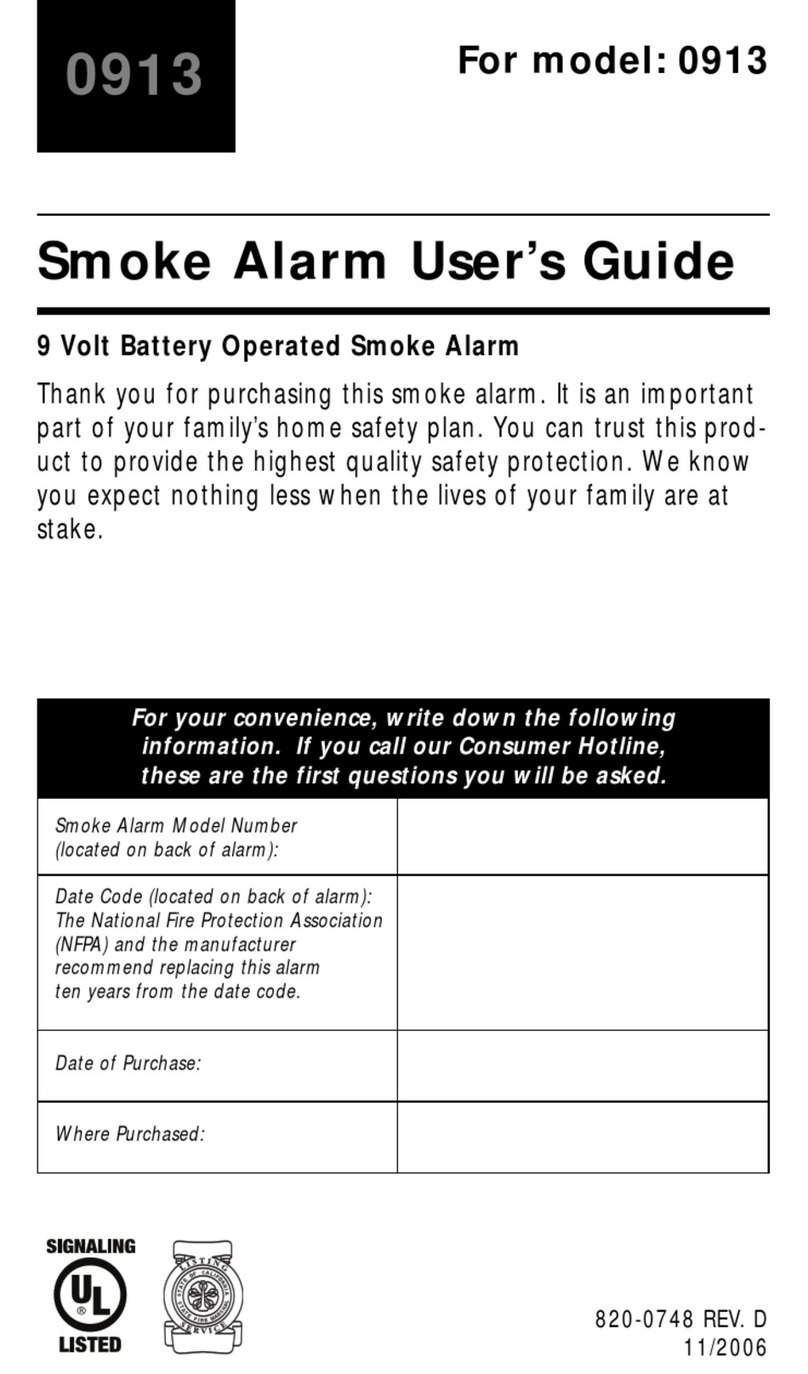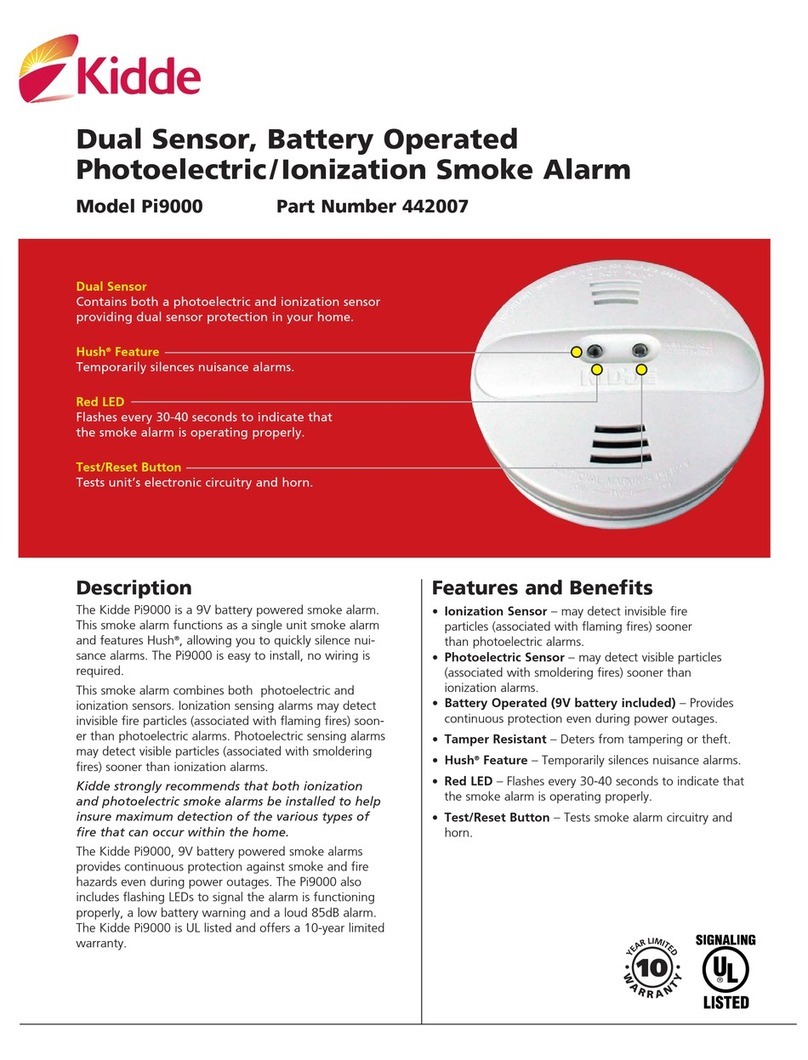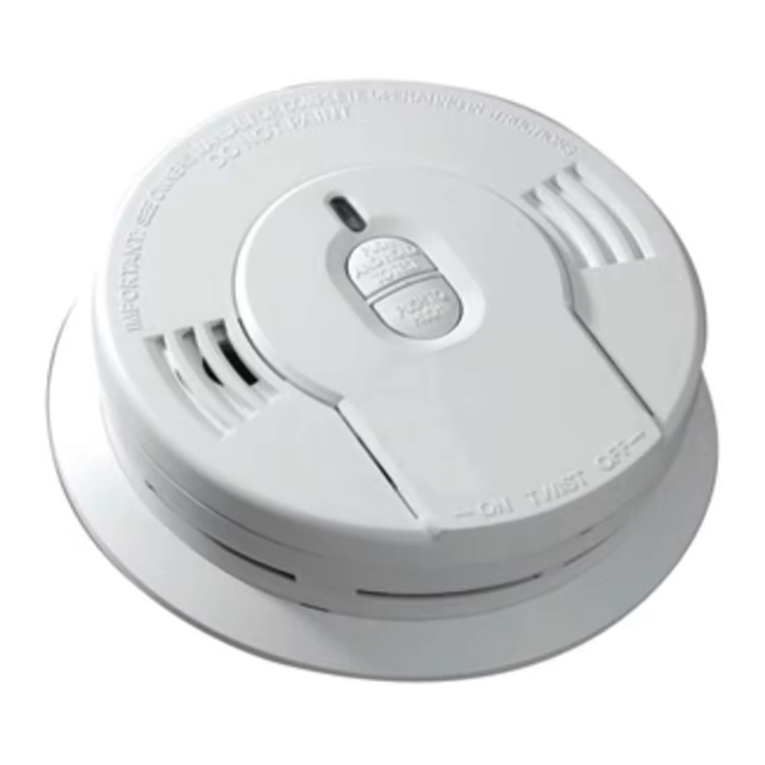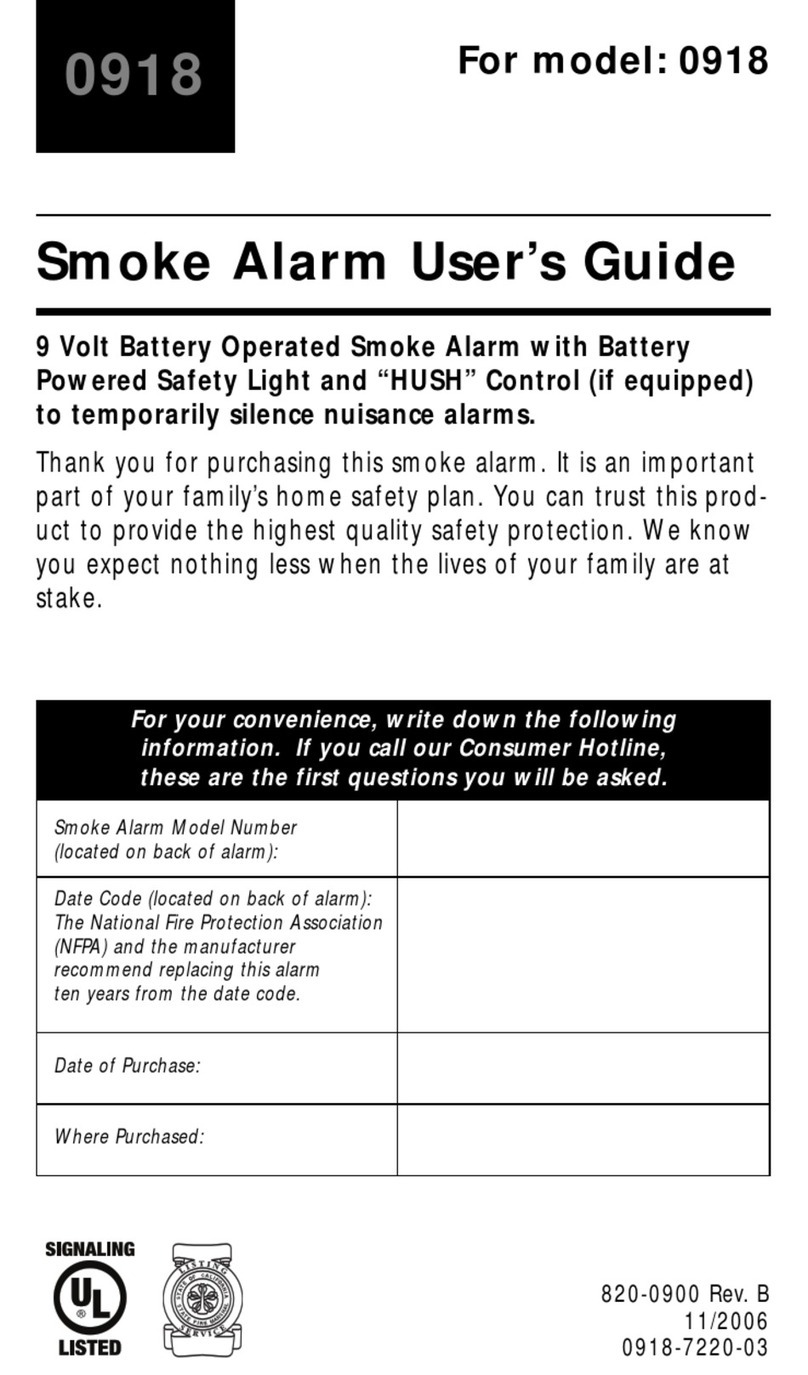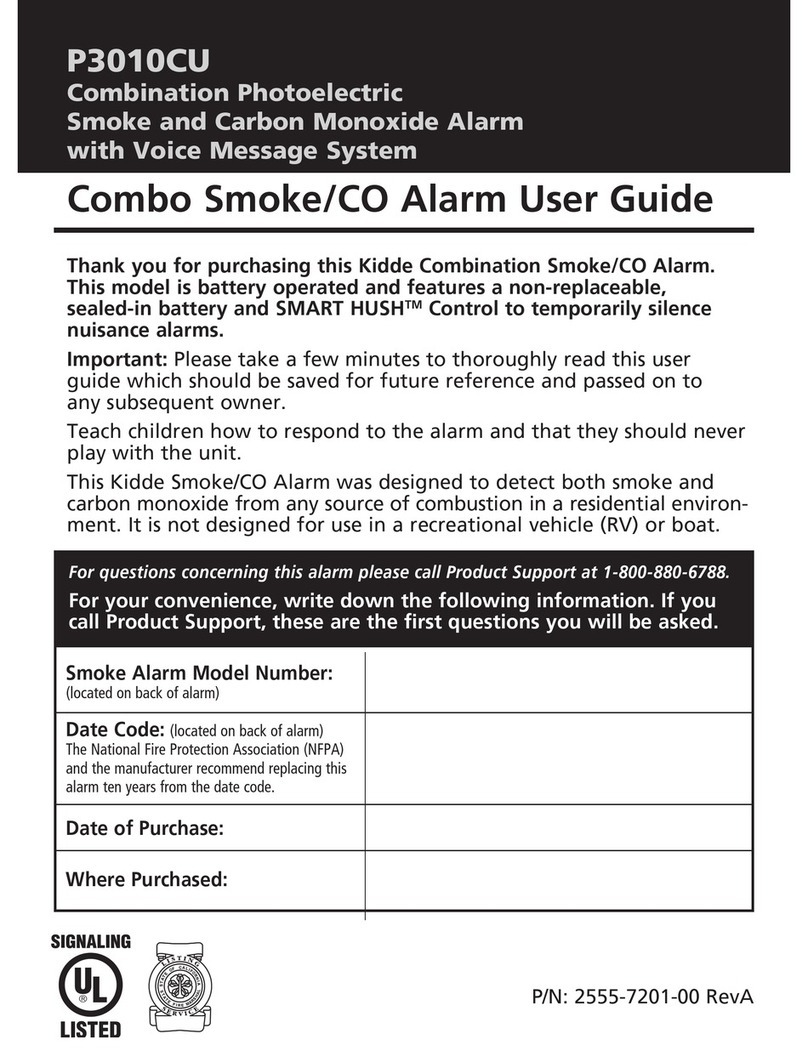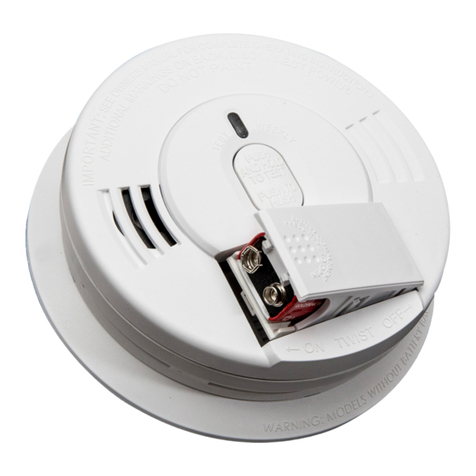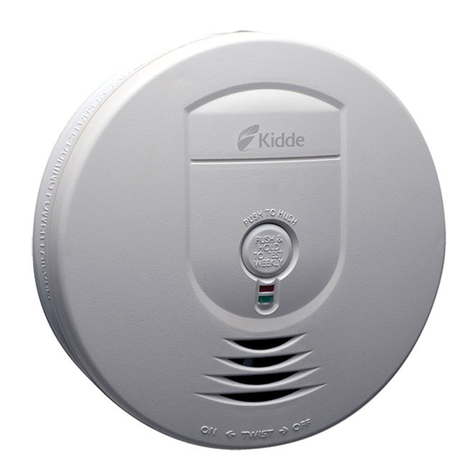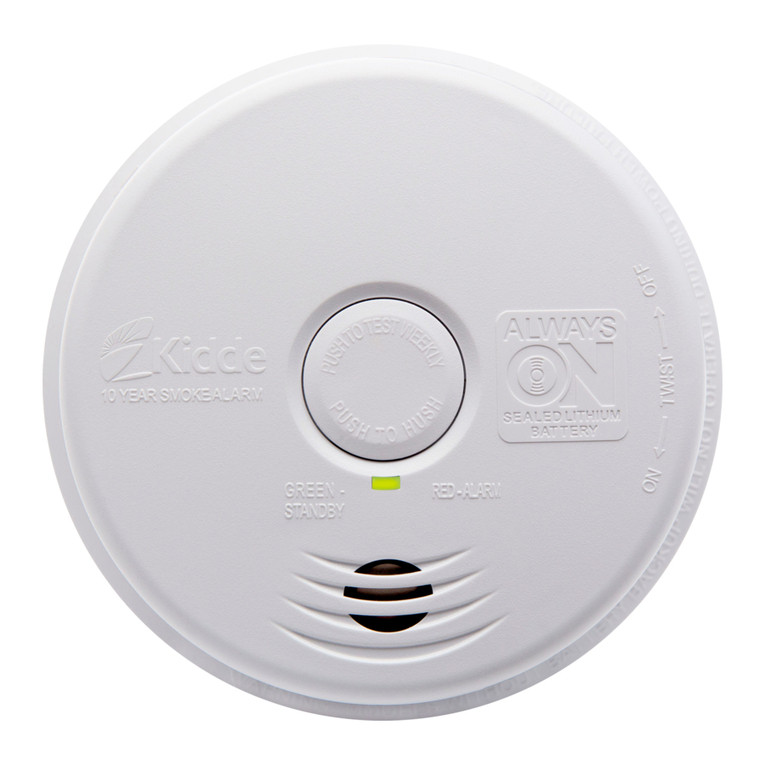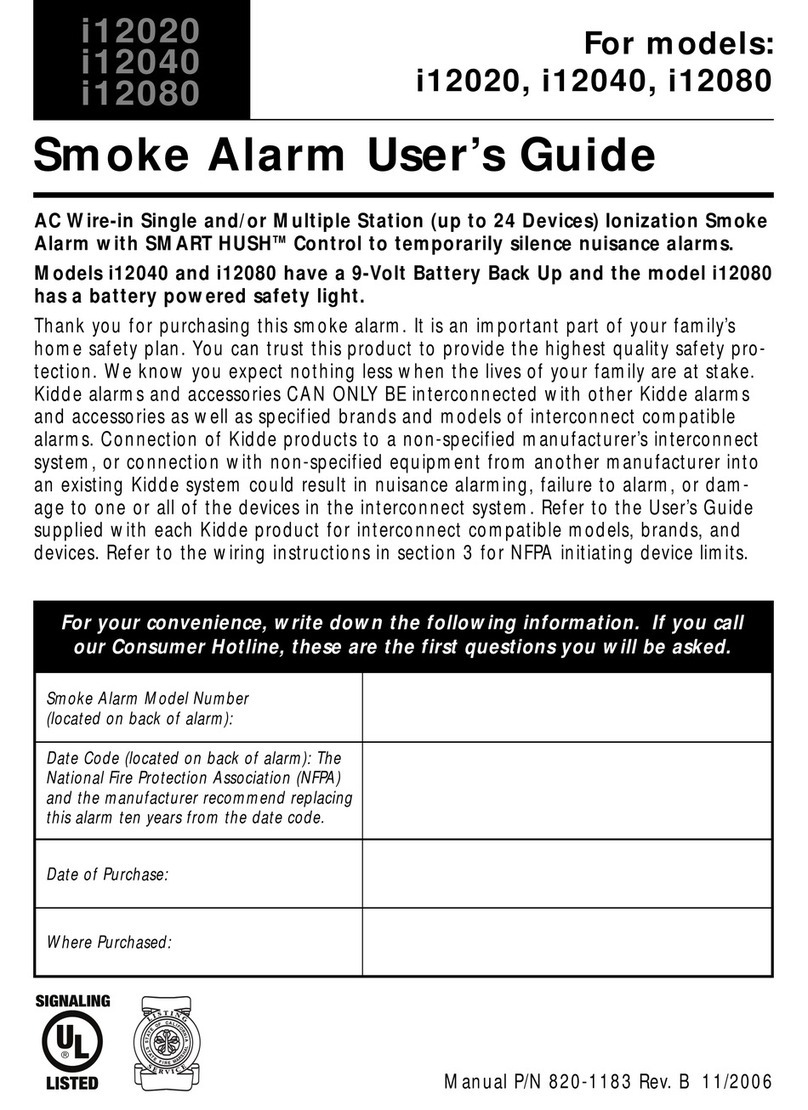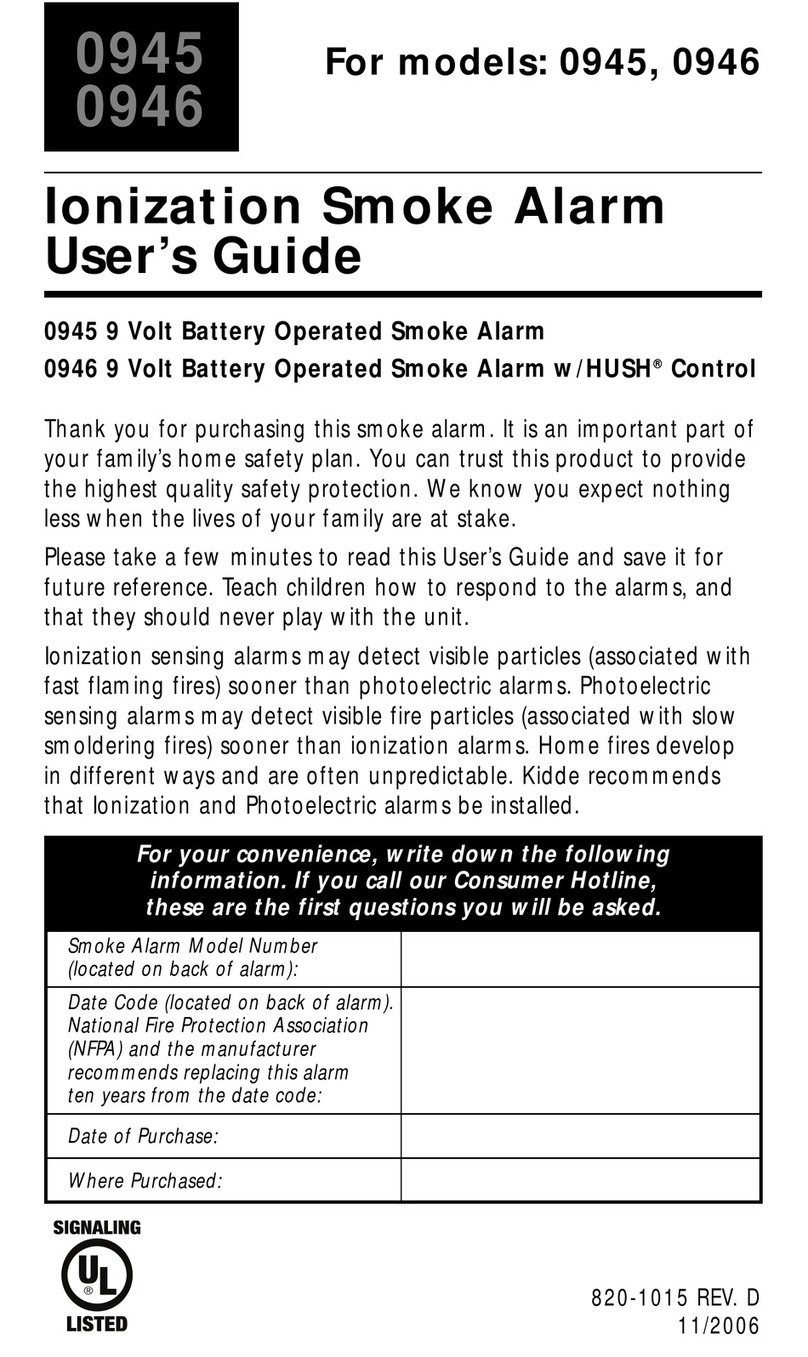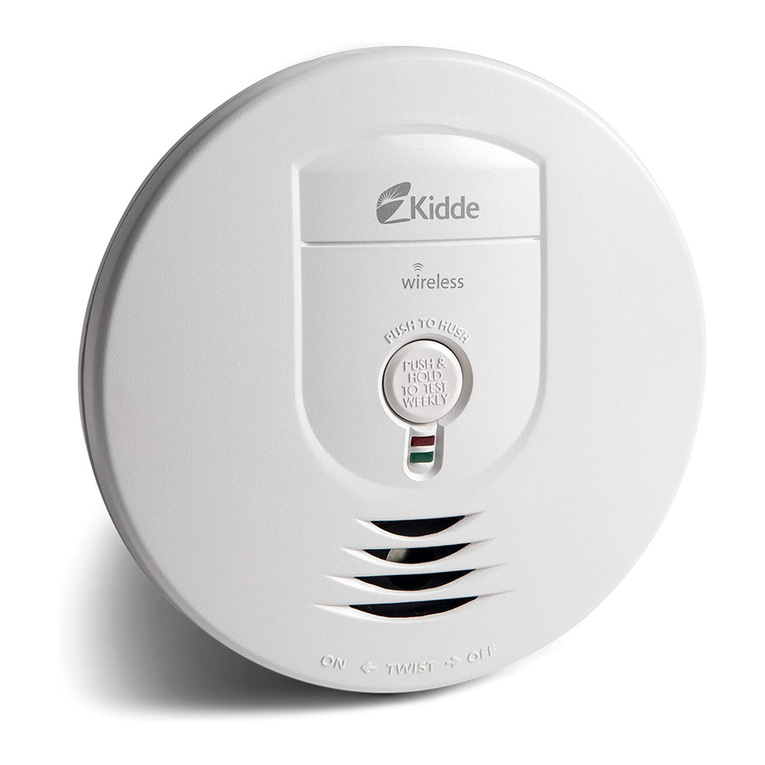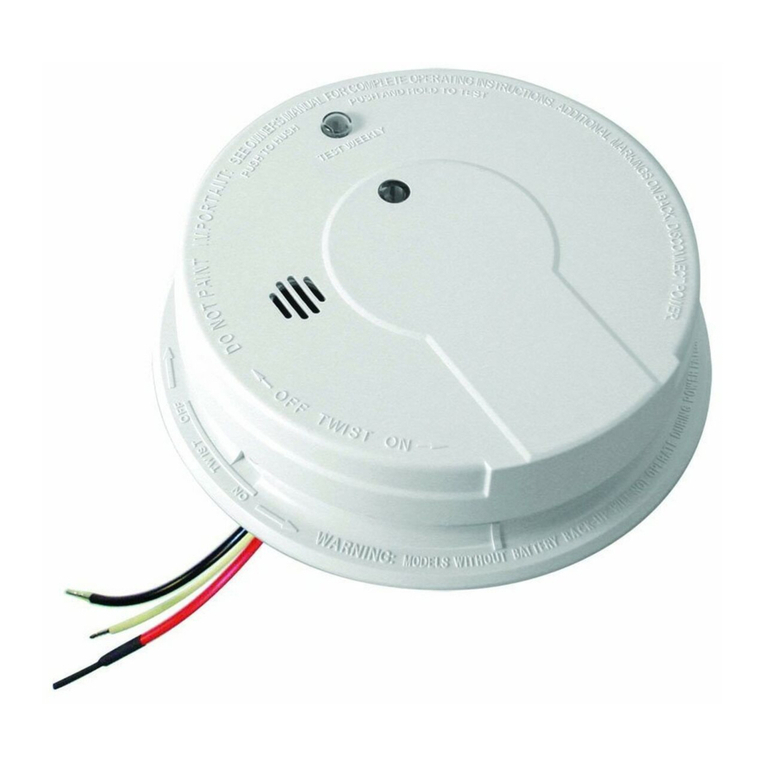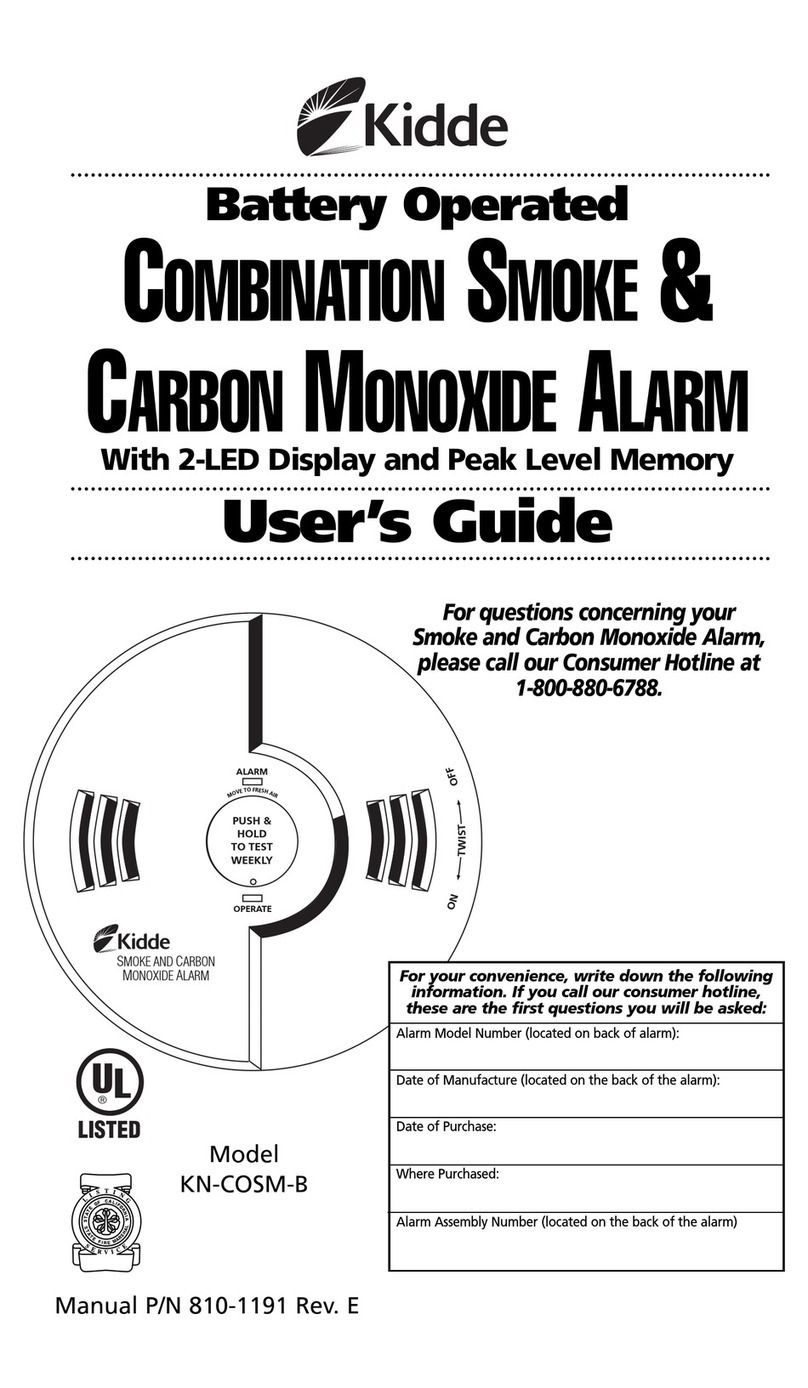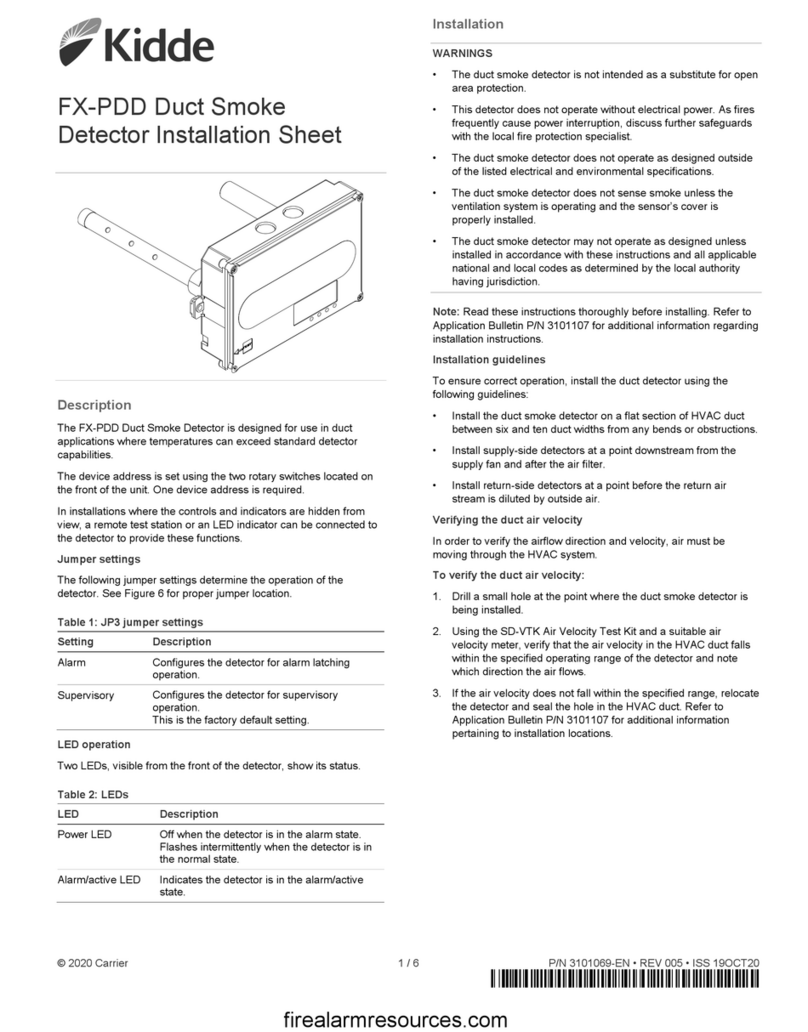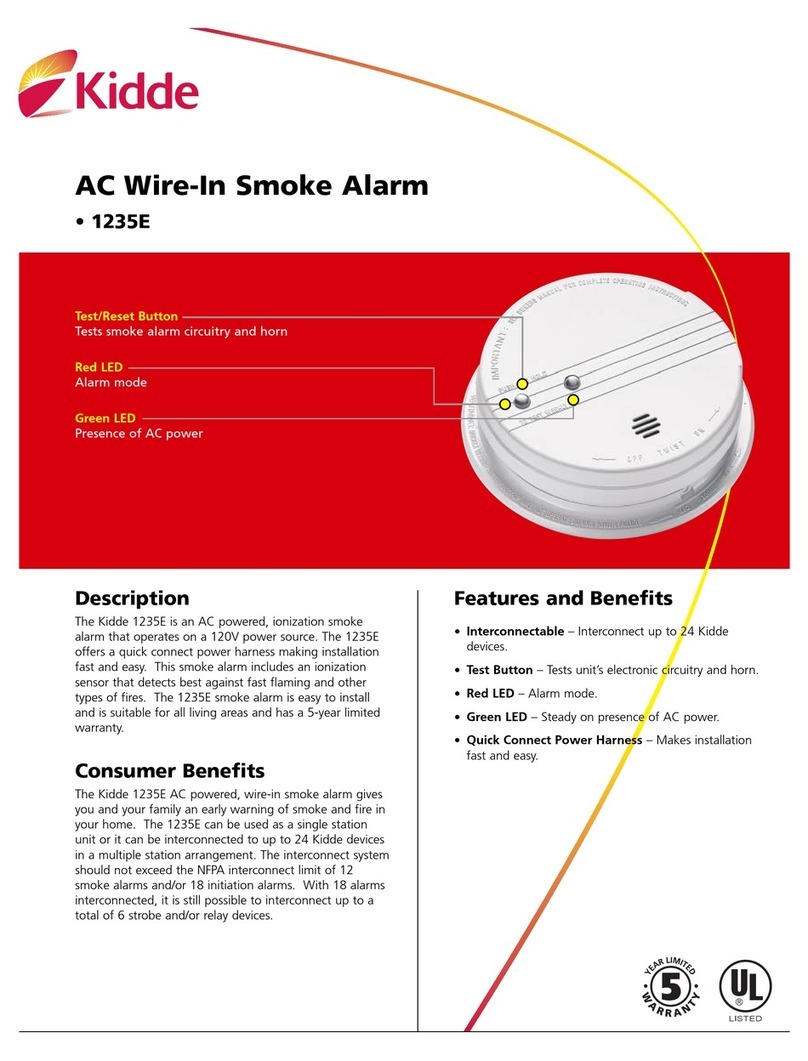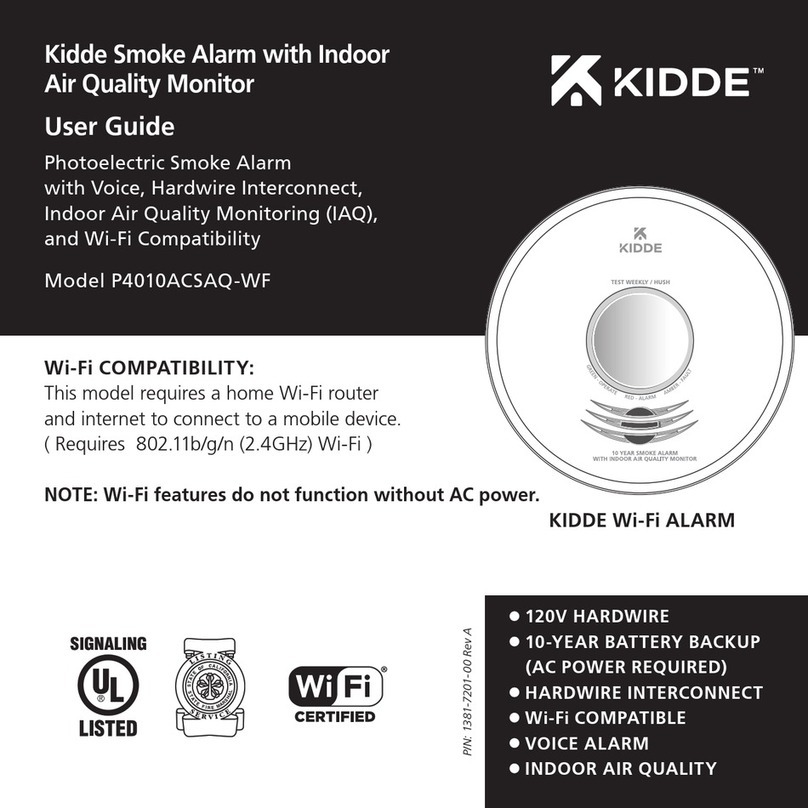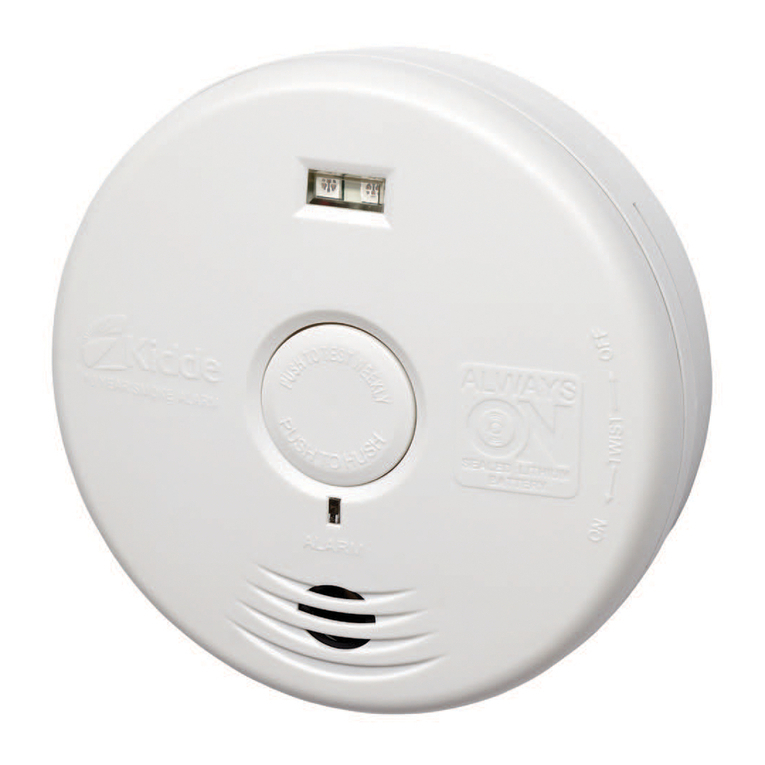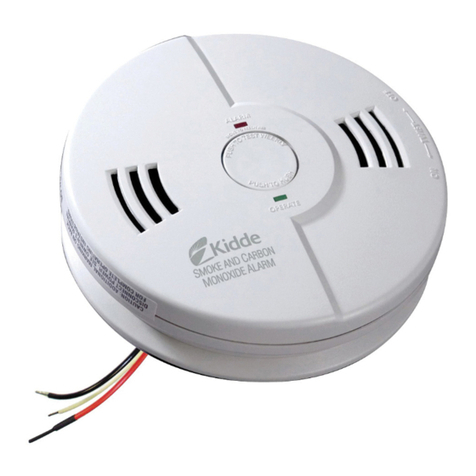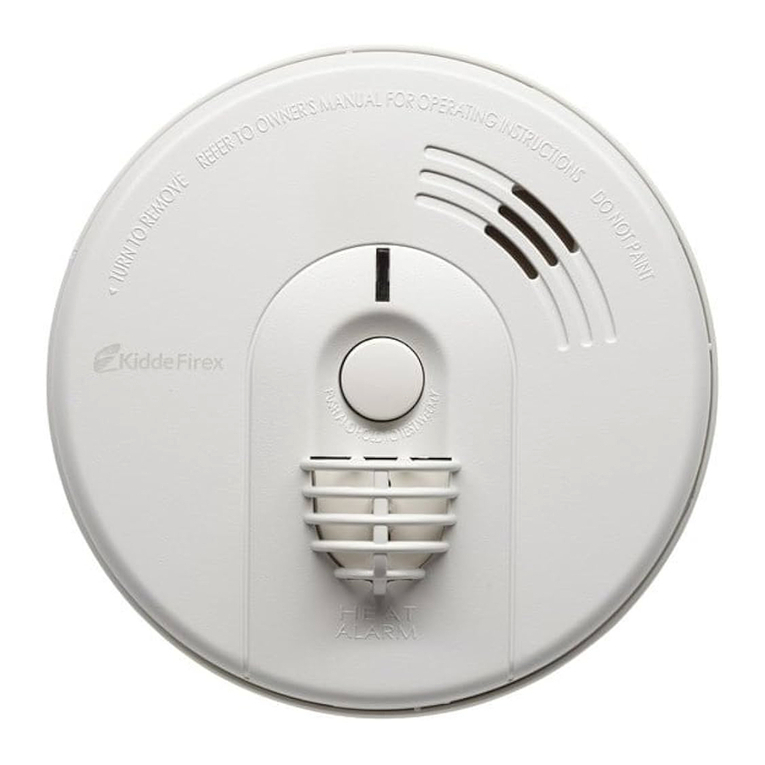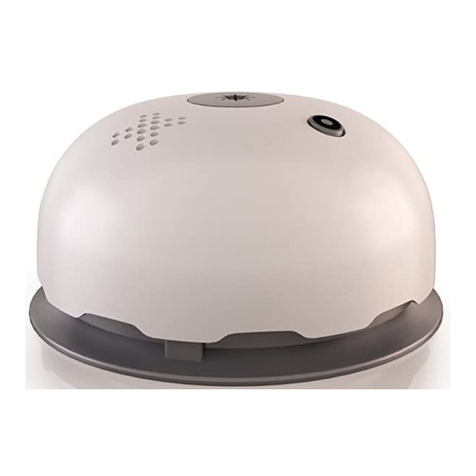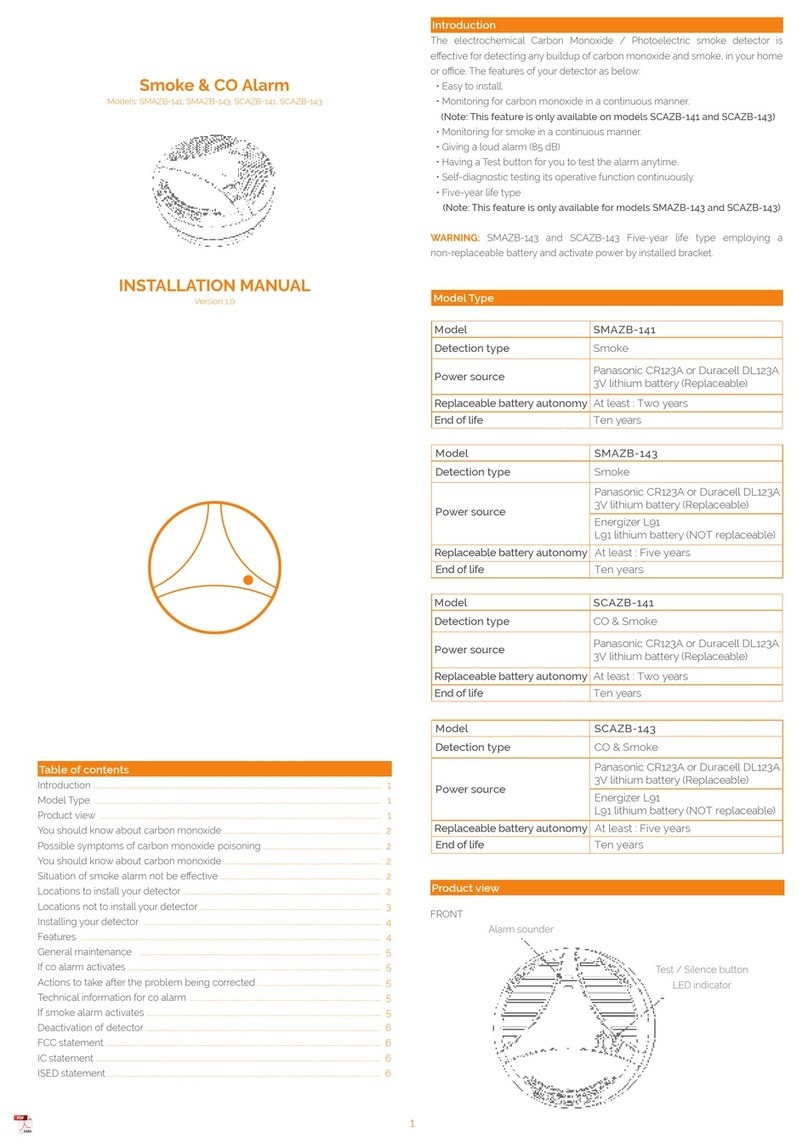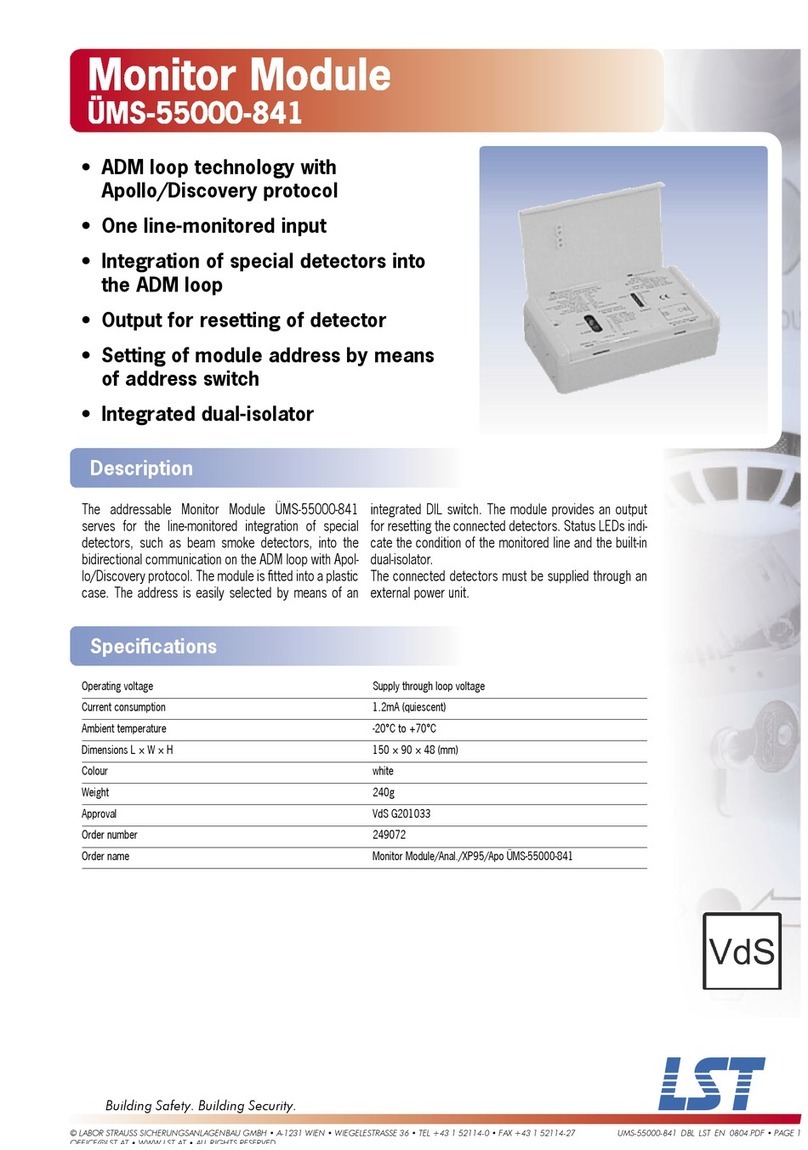
© 2018 United Technologies Corporation 1 / 4 P/N 3102530-EN • REV 001 • ISS 16OCT18
KIR-PCD Intelligent Photoelectric
Smoke Detector with CO Sensor
Installation Sheet
Carbon monoxide alarm procedure
WARNING: The carbon monoxide (CO) alarm indicates the presence
of CO, which can kill you. If the alarm signal sounds four times, pauses
for five seconds, and then repeats the pattern, follow the steps shown
below.
1. Move to fresh air immediately —outdoors or by an open door or
window. Check that all persons are accounted for. Do not reenter
the premises or move away from the open door or window until
emergency services responders have arrived, the premises have
been aired out, and your detector remains in normal condition.
2. Call emergency services, the fire department, or 911:
Phone:
Information about carbon monoxide
WARNINGS
•Read these installation instructions in their entirety before
proceeding. Leave these instructions with the owner/user of this
CO detection equipment.
•This product is intended for use in indoor locations of dwelling
units. It is not designed to comply with Occupational Safety and
Health Administration (OSHA) commercial or industrial standards.
•The detector only indicates the presence of CO gas at the
detector. Carbon monoxide gas may be present in other areas.
•Failure to properly install, test, and maintain a CO detector may
cause it to fail, potentially resulting in loss of life.
•Installation of this detector is not a substitute for proper installation,
use, and maintenance of fossil fuel-burning appliances, including
appropriate ventilation and exhaust systems.
•To reduce the risk of CO poisoning, test the detector operation
when not in use for 10 days or more.
•This detector does not operate without electrical power. As fires
frequently cause power interruption, discuss further safeguards
with the authority having jurisdiction (AHJ).
•Do not paint the detector.
Notes
•Regulatory code may require that the system generate a three-
pulse temporal code (TC3) for fire alarms and a four-pulse
temporal code (TC4) for CO alarms.
•The CO sensor is calibrated at the factory. CO sensitivity is set to
conform to UL 2034 requirements and cannot be changed by the
user. See “Regulatory information” on page 4 for specific sensitivity
values.
•Connect this detector only to a UL Listed control panel capable of
differentiating between alarm signals (fire, burglary, CO, etc.) and
providing distinct identification for each.
•To reduce the likelihood of nuisance alarms, ventilate
accommodation spaces when using household cleaning supplies
or similar contaminants. If a detector has been exposed to such
contaminants, test it promptly afterwards.
Symptoms of CO poisoning
The following symptoms related to CO poisoning should be discussed
with all occupants of the protected site.
Mild exposure: Slight headache, nausea, vomiting, fatigue, runny nose,
sore eyes (often described as “flu-like”symptoms).
Medium exposure: Severe throbbing headache, dizziness, drowsiness,
confusion, fast heart rate.
Extreme exposure: Unconsciousness, brain damage, convulsions,
cardiorespiratory failure, death.
Many cases of reported CO poisoning indicate that while victims are
aware they are not well, they become so disoriented that they are
unable to save themselves by either exiting the building or calling for
assistance. Young children and pets may be the first affected.
CO sources
The CO sensor in this detector is designed to detect carbon monoxide
gas from any source of combustion. It is not intended to detect fire,
smoke, or any other gas. Potential CO sources include fuel-fired
appliances (e.g., space heater, furnace, water heater, range, oven,
clothes dryer); other sources of combustion (e.g., kerosene-burning
stove or heater, or gas log fireplace); or internal combustion engines.
In addition, excessive exhaust spillage or reverse venting of fuel-
burning appliances can produce dangerous transient levels of CO. This
can be caused by external conditions:
•Wind direction, velocity, or a combination of both, including high
gusts of wind or insufficient draft in vent pipes
•Temperature inversions that can trap exhaust gases near the
ground
•Negative pressure differential resulting from the use of exhaust
fans
•Simultaneous operation of several fuel-burning appliances
competing for limited internal air
•Vent pipe connections vibrating loose from dryers, furnaces, or
water heaters
•Obstructions in vent pipes or unconventional vent pipe designs
which can amplify the above situations
•Poorly designed or maintained chimneys and/or vents
•Extended operation of unvented fossil fuel-burning devices (range,
oven, fireplace, etc.)
•Idling cars in an open or closed attached garage, or near the
premises
